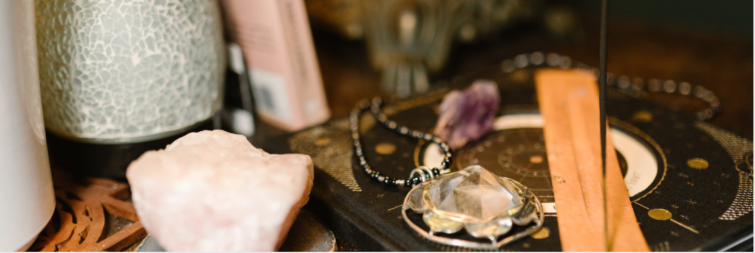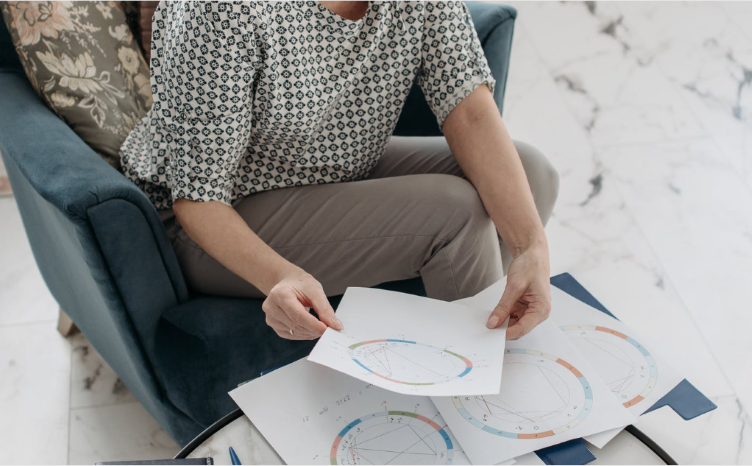The horoscope basis

If you can imagine a clock covering the sky, you might have a glimpse at what an astrological chart looks like.
First imagine how you stand at the place of your birth and you are facing south.
On the left, where the clock shows nine o’clock, you can see the eastern horizon – that’s your Ascendant. If you are born at dawn, it is also the place where your Sun is. The position where the clock shows 12 o’clock is high in the sky, in front of you.
On the right, where the clock shows 3 o’clock, there is the western horizon. If you are born at dusk, there is your Sun. If you came to this world somewhere around midnight, when the Sun was on the other side of the globe, your Sun is at the place where the clock shows 6 o’clock.
You can set the Moon in a similar way, if you know where it is in the moment of your birth. Were you born during the New Moon? If yes, then the Moon and the Sun are in about the same place.
Or were you born at the time of the full Moon? This means that the Sun and the Moon are on opposite sides.
The following is important: the horoscope is not a metaphysically synthesized concept, nor a mystical symbol, nor a psychological portrait. The horoscope is a map.

Your horoscope shows the relative positions of the Sun, Moon and planets in relation to the place of birth, exactly at the time when the birth occurred.
The astrologer’s task is to look at the map and understand the meaning. But first you need to have a map. In the past, before computers invaded all corners of human existence, calculating the position of the Sun, the Moon and the planet was a real challenge.
It took patience, many hours of free time, a fearless approach to mathematics and leadership. For example, you had to find the longitude and latitude of a place. Then you had to correct this data for the distance between the location of your birth and the standard time meridian for that location.
Also, you had to differentiate between local time and middle Greenwich Mean Time etc. And, of course, you had to calculate the planet’s displacements using, among other things, tables of proportional logarithms.
It all required a lot of effort, perseverance and piles of paper. Most people didn’t want to deal with these things.
To master this process, you need to grapple with the logarithmic tables. If this sounds like a battle you can’t win, you may want to avoid calculating altogether and go directly on the interpretation of the horoscope. In that case, you can get a complete, accurate horoscope from a professional astrologer.
But can you get a horoscope in just ten seconds?
The easiest way to get an accurate horoscope is to do it via the Internet. Visit one of the locations in the following list and type date, year, time and place of birth.
Astrolabe : offers an outstanding, free natal card plus about five or more pages of explanations. Fill in the form, send it via e-mail and a few seconds later, you get a ready horoscope. Astrolabe also offers other services which are not free.
Astrodienst: offers a free natal map.
You can also visit Cafe Astrology or Chaos Astrology to get a free natal chart.
Did you know that here at OSR you can name stars?

